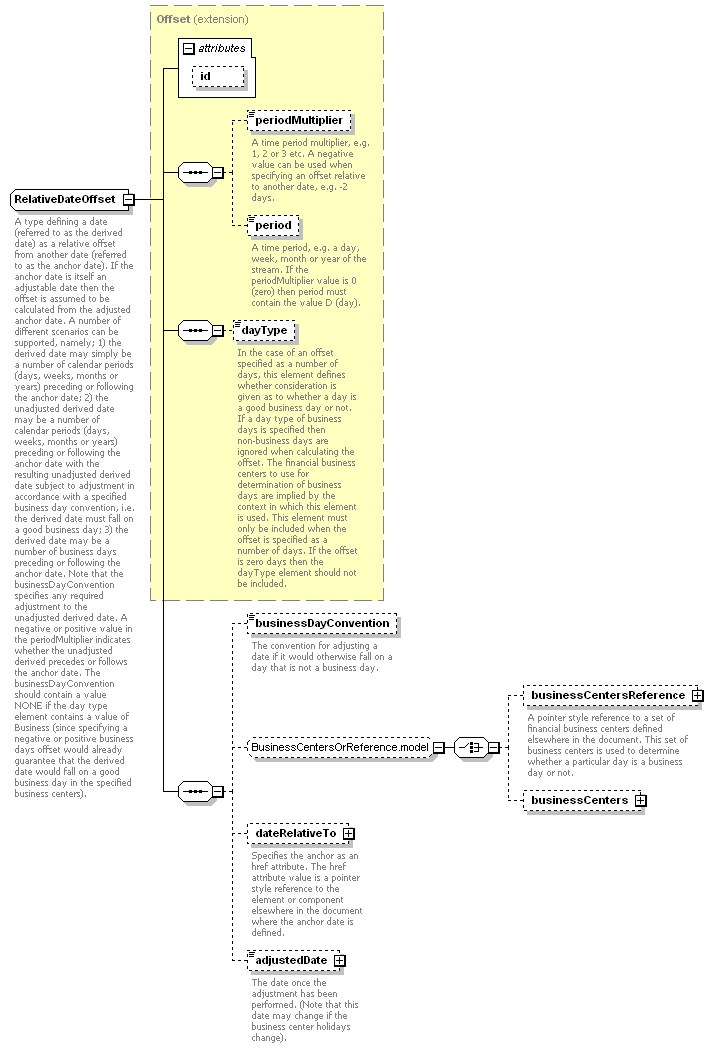
Namespace: |
|
Content: |
complex, 1 attribute, 8 elements |
Defined: |
globally in fpml-shared-5-3.xsd; see XML source |
Includes: |
definitions of 3 elements |
Used: |
at 17 locations |

XML Representation Summary |
||||||
| <... | ||||||
|
||||||
| > | ||||||
|
||||||
| </...> | ||||||
| AdjustedRelativeDateOffset (as extension base), | RelativeDates (as extension base) |
Type Derivation Tree Period (extension) |
| <xsd:complexType name="RelativeDateOffset"> <xsd:complexContent> <xsd:sequence> </xsd:sequence> </xsd:extension> </xsd:complexContent> </xsd:complexType> |
Type: |
IdentifiedDate, simple content |
| xsd:date |
| <xsd:element minOccurs="0" name="adjustedDate" type="IdentifiedDate"/> |
Type: |
BusinessDayConventionEnum, simple content |
| enumeration of xsd:token |
Enumeration: |
|
| <xsd:element minOccurs="0" name="businessDayConvention" type="BusinessDayConventionEnum"/> |
Type: |
DateReference, empty content |
| <xsd:element minOccurs="0" name="dateRelativeTo" type="DateReference"/> |
| XML schema documentation generated with DocFlex/XML 1.8.6b2 using DocFlex/XML XSDDoc 2.5.1 template set. All content model diagrams generated by Altova XMLSpy via DocFlex/XML XMLSpy Integration. |